The degree of psoriasis is determined by the interval in which the disease takes on its distinctive features. Many psoriatics mistakenly refer to this stage as a severe or mild form of the disease, but in medical records, the term is used in a completely different sense.
What is the stage of psoriasis?
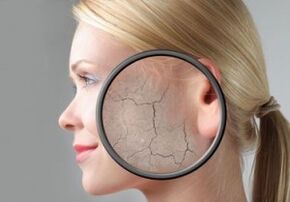
Psoriasis is recognized as a recurrent skin pathology, if genetics are to blame. According to dermatologists, at least 2% of the world’s population suffers from this disease, which means that the problem is very pressing. During psoriasis, 2 conditions are clearly distinguished:
- Relapse.This term refers to skin deterioration. In a relapse, the patient experiences itching, pain, burning, severe skin rashes, irritation and discomfort. The victim's condition was worsened by insomnia, neurosis and anxiety.
- Remnants.This word is used to improve the appearance of the skin. With remission, the skin returns to normal color, redness disappears, and the psoriatic plaque area decreases.
The level of psoriasis partly doubles the description of remission and relapse, so many dermatologists use these words synonymously. In clinical practice, 3 stages of psoriasis are described:
- level of progress;
- pegun;
- regression stage.
Since we are talking about cyclical processes, the stages are intertwined and form a persistent disease.
Facts!The level of progress is considered the most difficult to feel.
What is the progress of psoriasis?
The level of progress is triggered by a number of triggers, such as winter or stress. In some cases, even an experienced dermatologist cannot clearly identify the trigger. During the progressive stage, the following occurs:
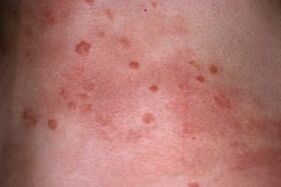
- Psoriatic nodules develop rapidly, affecting the skin, connecting to so-called plaques, which exfoliate and itch. Plaque is an arbitrarily shaped spot, most often round or oval in shape, sometimes with uneven edges.
- Papules, which are nodules of individual psoriatic rashes, are lumps on the skin. The edges of the papule do not peel off, and the middle part peels off. As a large number of dead scales accumulate, plaque begins to rise above the surface of the skin. Pride gives them a more convex and uneven appearance.
- This pathological stage is characterized by isomorphic reactions, consisting of increased rash with skin lesions, scratches, injections, wounds, microtraumas. This phenomenon bears the name Köbner.
Delayed reactions are characteristic of progressive psoriasis levels. In some cases, a skin rash appears about 9 days after exposure to the trigger (such as food allergens). Usually, psoriatic rash appears within 24 hours after being exposed to adverse factors.
Interesting!95% of psoriatics have some type of food intolerance that can trigger a relapse. To prevent swelling, you need to keep a food diary and observe reactions to different types of food.
Stable and recessive levels
A stationary stage is a period in the course of psoriasis in which the victim's condition is relatively stable. At stationary level:
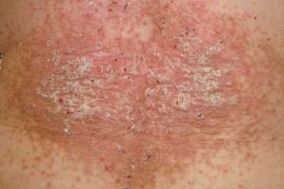
- Psoriatic plaques have fine underline. The entire surface of the plaque is covered with a layer of thick scales that are easily peeled off. Itching and discomfort are mild. There is no bright red rim around the papule.
- With skin microtraumas, the Koebner phenomenon is not observed, i. e. scratching or cutting healthy skin no longer turns into psoriatic plaques.
Regressive or recessive levels are characterized by large lesions in psoriasis. First, pseudo-atrophic rims can be seen around the papules, and then the patient sees a rapid cessation of skin exfoliation, with the formation of hyperpigmentation plaques.
Pathological severity
An additional diagnostic criterion is the assessment of the area of psoriatic lesions. The term "severity" is used to describe it. Dermatologists distinguish 3 degrees of severity of skin diseases:
- Easy.Psoriatic plaques occupy 1 to 3% of the entire body area. The small size of the affected area does not mean the patient is healthy. With psoriasis on the head or face, even a few plaques will be enough to cause discomfort and pain in a person.
- Medium.The total number of psoriatic eruptions covers 3 to 10% of the entire body area. In this case, the surface of the back, chest and outer joints, scalp, palms and feet are affected. This prevalence causes serious intoxication and severe pain. Patients may lose their ability to work or completely, their mental state and nervous system condition deteriorate.
- Weight.The disease covers more than 10-15% of the skin surface. According to rough estimates, if psoriasis occupies more than a quarter of the entire body area, the chances of liver or kidney failure increase many times over. Compensatory internal organ damage can lead to psoriasis death.
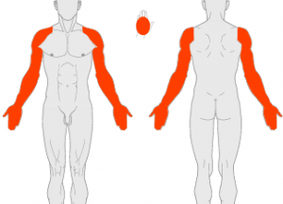
To assess the severity of psoriasis comprehensively, a special scale called PASI is used. The scale takes into account:
- percentage of healthy and diseased skin;
- pathological stage;
- patient response to drug therapy;
- individual tolerance to psoriasis (mental condition, complications of the nervous and psychiatric systems);
- objective data of laboratory tests in dynamics (e. g. , amount of uric acid in blood tests).
Diagnosis takes into account all the symptoms that affect a person's condition with psoriasis. Its intensity is shown in medical records:
- itching process on the skin;
- redness;
- swelling;
- hyperemia;
- skin thickening;
- exfoliation;
- blood flow;
- swelling;
- infection;
- pain syndrome.
On the PASI scale, the number of skin lesions is explained by numbers, from 0 to 72, where 0 is the absence of skin symptoms, and 72 is the spread of large-scale and maximum disease.
Attention!It is important for the patient first to know and monitor for signs of deterioration. If unwanted symptoms appear, you must immediately see a dermatologist, as psoriasis does not always enter the stationary stage itself. Recurrence can occur for decades.
Treatment of psoriasis depends on its severity
For each stage of the disease, its own treatment methods have been developed, so the first thing a dermatologist determines is whether psoriasis is progressive, stable or backward.
How progressive levels are treated
Every psoriasis sufferer guesses that forgiveness will end with his or her own feelings. If the itching gets worse, the skin looks worse, and the psoriasis clearly spreads to the surface of the body, treatment should be started. Advanced therapy has the following characteristics:
- Patients are involved in the prevention of further deterioration, adhere to a strict diet, refrain from triggering pathological processes (stress, smoking, alcohol).
- For severe itching, antihistamines can be used, an additional benefit of this class of medication is the removal of swelling in the area of psoriatic plaques.
- A dermatologist prescribes a variety of topical treatments to heal, soften and thin the skin. By doctor's decision, a cream, ointment or spray is selected. Tar soap and solid oils provide positive dynamics. You can also apply compresses or apply cosmetics with Dead Sea mud.
The main task at this stage is to stop the deterioration before the disease enters a prolonged relapse. According to the instructions, doctors choose corticosteroids in injections or in the form of ointments.
Attention!Corticosteroids should be used in the short term and intensively under the supervision of a dermatologist. You can give yourself an injection or antihistamine ointment.
Stable and regressive stage therapy
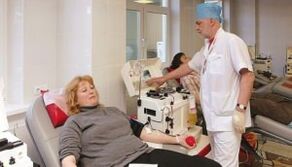
Further action from a dermatologist depends on the body's response to the treatment chosen. The following scenario is possible:
- Drugs have a positive effect. In 1-2 weeks, psoriasis passes a stationary stage, deterioration and deterioration occur.
- Medication does not work. If, after 2-4 weeks from the moment of prescribing the medication, the results are still not visible, this is a reason to change either the list of medications or the doctor treating.
- Medicine is getting worse. Such dynamics may also occur, especially if the dose or frequency of administration is insufficient. Relapse is delayed, psoriatic plaques cover large areas of the body, the person needs hospital treatment.
In medical institutions, more powerful therapies are used, for example, blood purification equipment. With a good reaction, psoriasis enters a stationary stage, which can last from a few days to several months.
Interesting!More than 80% of patients are aware of seasonal hostility. This makes the disease predictable and allows you to prepare for a relapse.
The list of drugs for the stationary and regression levels is the same, but the dosage and frequency of administration are less than the progressive level.
10-15 year pardon
A competent dermatologist prescribes the following tasks - to select medications and physiotherapeutic agents that will give psoriatic patients the longest improvement. In this case, the patient himself should do his best to promote treatment, avoid triggers and take medication responsibly. If the federation between the patient and the doctor is successful, then the remission period is not limited. Stable health can last 15 years or more.























